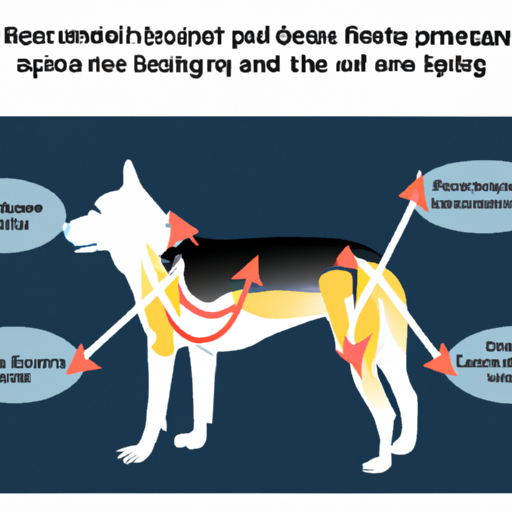As a caregiver to your beloved canine companion, you may have noticed some peculiar behavior lately – a hunch in their back, an arch that wasn’t there before. This could be a sign that something is amiss. In this article, we’ll explore the possible reasons for this posture, and what actions you can take.
1. Understanding Your Dog’s Posture
Just like humans, dogs use their bodies to communicate. Your dog’s posture can tell you a lot about their current state, both physically and emotionally. A typically confident dog with an arched back may be feeling insecure or fearful.
- Fear or Anxiety: Dogs often arch their backs and tuck their tails when they’re scared or anxious.
- Domination or Aggression: In some cases, dogs may arch their backs to appear larger, conveying dominance or aggression.
- Playfulness: Sometimes, dogs simply arch their backs during play, particularly during the ‘play bow’.
2. Possible Health Issues
While an arched back can be an emotional response, it can also be a sign of underlying health issues.
- Gastrointestinal Problems: Dogs might arch their backs due to stomach pain. Conditions such as pancreatitis or gastritis may result in this arched back posture.
- Musculoskeletal Problems: A dog arching its back could be due to musculoskeletal problems like intervertebral disc disease, arthritis, or muscle spasms.
| Health Condition | Symptoms |
|---|---|
| Pancreatitis | Loss of appetite, vomiting, abdominal pain |
| Gastritis | Vomiting, diarrhea, loss of appetite |
| Intervertebral Disc Disease | Difficulty walking, crying out in pain, unwillingness to jump |
3. When to See a Vet
Sometimes, it’s difficult to determine whether your dog’s arched back is due to a simple tummy ache or a more serious health condition. Here are some signs it’s time to take your dog to the vet:
- Your dog’s back remains arched for an extended period.
- They display other symptoms, such as loss of appetite, lethargy, or changes in behavior.
- They seem to be in pain when touched.
4. Preventing Back Problems in Dogs
Prevention is always better than cure. Here are some steps you can take to prevent back problems in your dog:
- Regular exercise
- Maintaining a healthy weight
- Providing a balanced diet
- Regular vet check-ups
5. FAQs
Q: Can anxiety cause my dog’s back to arch?
A: Yes, dogs may arch their backs when they’re feeling anxious or scared.
Q: What diseases cause a dog’s back to arch?
A: Some possible health conditions include pancreatitis, gastritis, and intervertebral disc disease.
Q: When should I take my dog to the vet?
A: If your dog’s back remains arched for an extended period, or they display other concerning symptoms, it’s time to see a vet.
Remember, your dog’s health and well-being is a shared responsibility. If you notice any changes in their posture, behavior, or general health, it’s best to seek professional advice.



